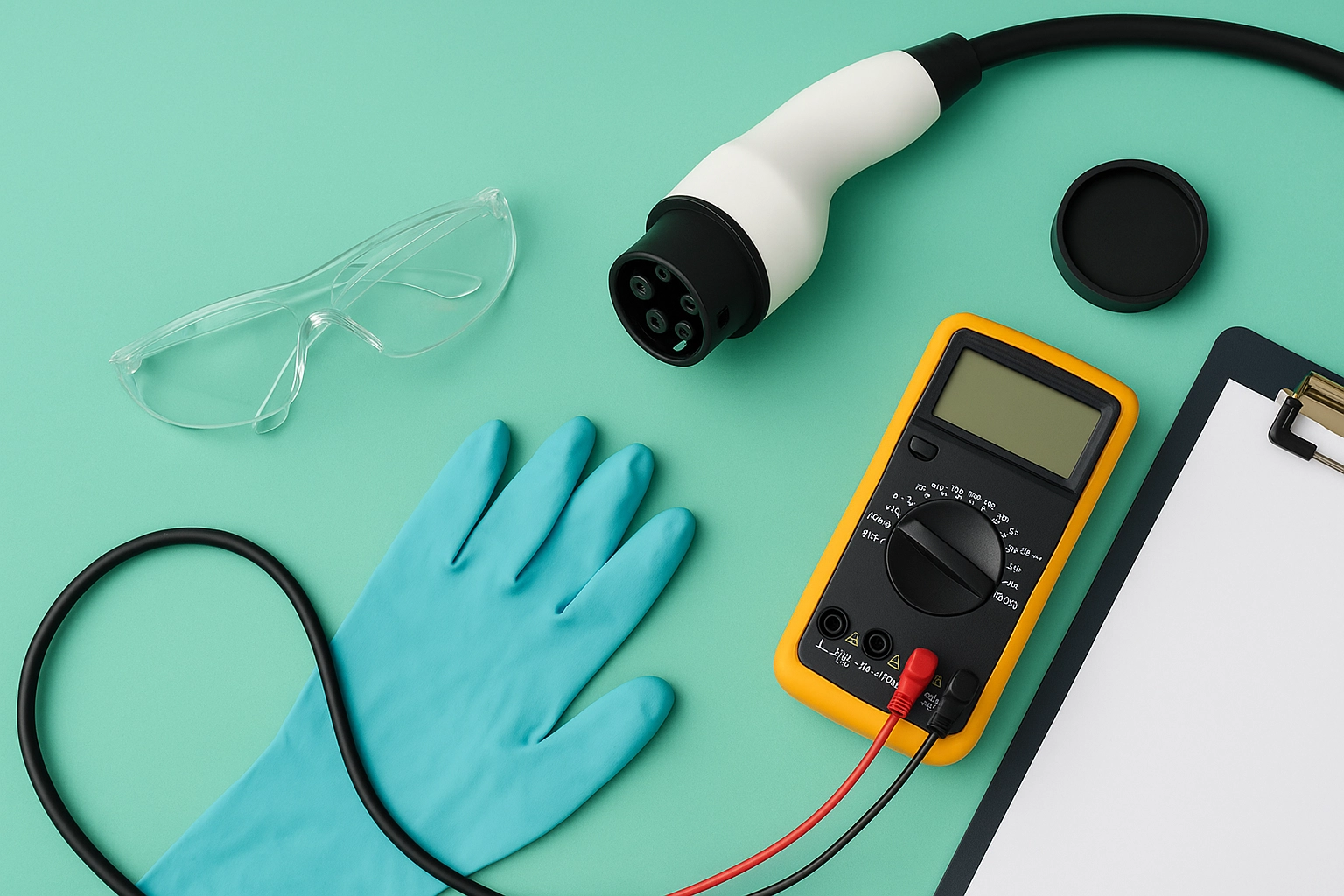IEC 61851 1 Electric Vehicle Conductive Charging System Test
The IEC 61851 series of standards provides a framework for the testing and certification of electric vehicle (EV) conductive charging systems. This standard is essential for manufacturers, quality managers, compliance officers, and R&D engineers to ensure that EV chargers meet global safety and performance criteria.
The primary focus of IEC 61851-1 is on the conduction-based charging system used in electric vehicles. This involves testing the charger's ability to supply power safely and efficiently through a cable and connector. The standard covers various aspects, including electrical characteristics, mechanical properties, environmental conditions, and safety features.
In this section, we will delve into the detailed processes involved in conducting an IEC 61851-1 test on electric vehicle conductive charging systems. We'll explore the key components of a compliant charger, the testing procedures, and the criteria for acceptance or rejection based on the results.
The test setup typically includes:
- Charging station (charger)
- Cable
- Connector
- Power supply equipment
The testing process involves several stages, each designed to ensure that the charging system meets all relevant safety and performance standards. These stages include:
- Electrical insulation resistance measurement
- Capacitance measurement between conductors
- Voltage and current measurements during charging
- Mechanical tests on the connector
- Environmental stress testing (e.g., temperature cycling, humidity)
The results of these tests are then compared against the specified acceptance criteria outlined in IEC 61851-1. Compliance with all test parameters is critical for ensuring that an EV charging system is safe and reliable.
It's important to note that the testing process not only ensures compliance with international standards but also provides valuable feedback on potential improvements or issues. This information can be used by R&D engineers to refine their designs and improve future products.
In summary, the IEC 61851-1 test is a crucial step in ensuring that electric vehicle charging systems are safe, efficient, and reliable. By adhering to this standard, manufacturers can demonstrate their commitment to quality and compliance with global regulations.
Applied Standards
| Standard | Description |
|---|---|
| IEC 61851-1 | Conductive charging systems for electric vehicles - Part 1: General requirements and test procedures |
| ISO/IEC 27430 | Electromagnetic compatibility (EMC) of vehicle to grid interface equipment for electric road vehicles |
The IEC 61851-1 standard is the primary document used in conducting this test. It provides detailed guidelines on how to conduct various tests, including electrical insulation resistance measurement and voltage and current measurements during charging. Additionally, ISO/IEC 27430 ensures that the electromagnetic compatibility of vehicle-to-grid interface equipment is maintained.
Benefits
- Ensures compliance with global safety standards
- Improves product reliability and performance
- Promotes interoperability between different charging systems
- Reduces the risk of accidents and equipment failures
- Supports regulatory compliance for international markets
- Aids in the development of safer and more efficient electric vehicles
- Fosters a better understanding of the testing process among all stakeholders
The benefits of adhering to IEC 61851-1 extend beyond just regulatory compliance. By ensuring that EV charging systems meet these stringent standards, manufacturers can enhance their reputation and gain a competitive edge in the market.
International Acceptance and Recognition
The IEC 61851 series of standards is widely recognized and accepted by regulatory bodies around the world. Countries like the United States, Canada, Europe, China, Japan, and South Korea have adopted these standards as part of their national regulations for electric vehicle charging systems.
Manufacturers who follow these standards can expect smoother interactions with international markets. The recognition of IEC 61851-1 ensures that products meet the highest safety and performance criteria, thereby enhancing trust among consumers and regulatory authorities.





